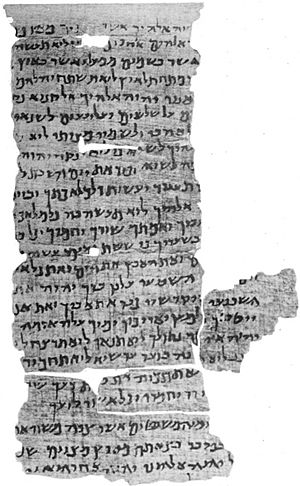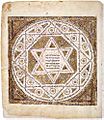Masoretic Text facts for kids

The Masoretic Text is a very important copy of the Hebrew Bible. It was carefully written by a group of Jewish scholars called the Masoretes. They worked on it between the 6th and 10th centuries CE.
This text is super important because it's the main source for almost all modern translations. These include translations of the Hebrew Bible and the Old Testament in Christian Bibles.
Making the Bible Standard
Before the first century CE, different copies of the Hebrew Bible had small differences. During the first century CE, Jewish Bible experts decided to make all copies the same. This process is called standardisation.
From about 100 to 300 CE, a group of Jewish Bible experts called the Tannaim copied the Hebrew Bible. Then, from about 300 to 500 CE, another group called the Amoraim kept working on it. The Masoretes then continued the Amoraim's work for the next 500 years.
How the Masoretes Worked
The Masoretes were extremely careful when they copied the Bible. If they thought there was a small mistake in earlier copies, they didn't change the text. Instead, they wrote a note in the side of the book.
After copying a book, they would count every verse, word, and letter. This was to make sure they hadn't made any mistakes.
The Masoretes also added special marks called vowel points. Hebrew writing doesn't usually show vowels, so these points made the Bible much easier to read.
The Masoretes mainly worked in two places: Babylon and Israel. They also wrote a special book about the Bible called the Masorah.
Images for kids
-
Carpet page from the Leningrad Codex, the oldest complete manuscript of the Masoretic Text.
See also
 In Spanish: Texto masorético para niños
In Spanish: Texto masorético para niños



